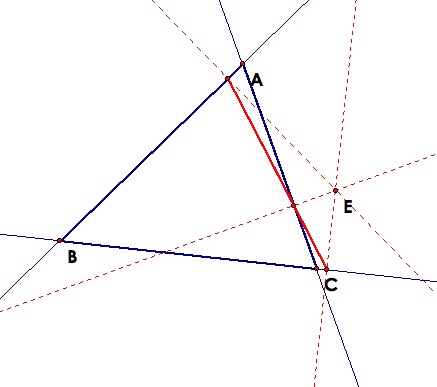

Pedal Triangles
by
Hyeshin Choi
Given a triangle ABC and any point E in the plane, the triangle formed by the perpendiculars to the sides of ABC is called the Pedal triangle for the pedal point E.Through investigations on GSP, since there is no restriction on our pedal point E, our pedal triangle will move anywhere whenever E moves or is moved. Click here for GSP.
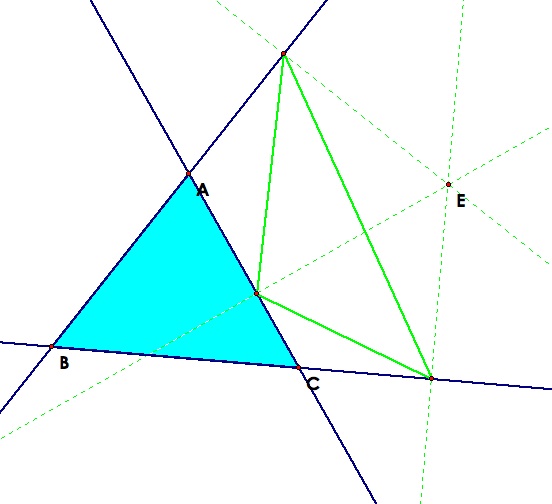
Exploration.
Now I want to look at my pedal point is the centroid of my triangle ABC. If E is the centroid, then pedal triangle is occurs on the interior of ABC and remains the same triangle because since E is the centroid. So this pedal triangle will never move outside of our triangle ABC.
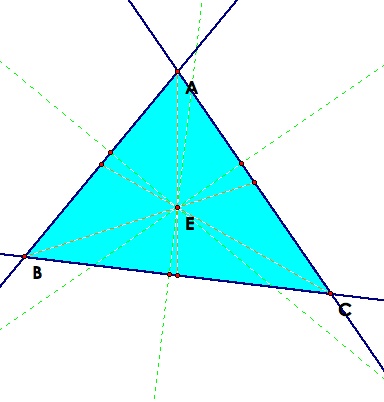
Now I want to see that pedal point E is the orthocenter of the triangle ABC. The pedal triangle is located inside of triangle ABC. From investigation of GSP, I know that because the pedal point is also the orthocenter, it will never change unless the original triangle ABC changes. So this triangle, pedal triangle, will never move outside of ABC.
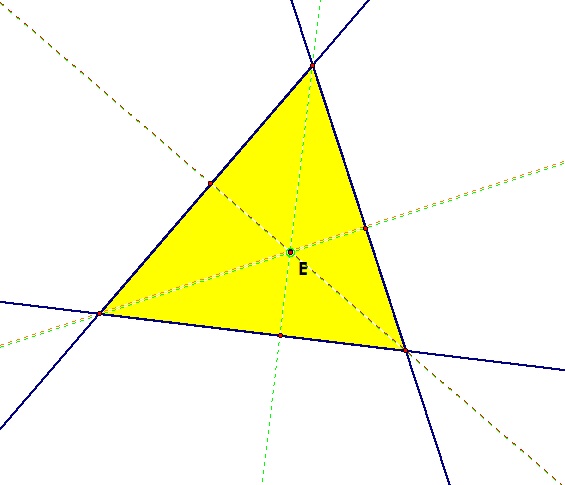
Now, let's look and see what happens when our pedal point is one of the vertices. If the pedal point is one of the vertices of the triangle, I no longer get a triangle but instead we get a segment.Click here for GSP.
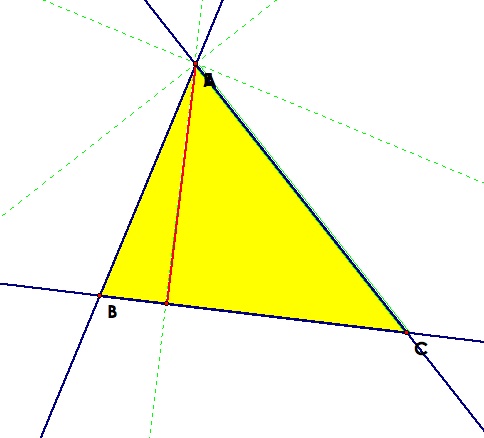
The pedal triangle is inside of ABC. It is possible, however, for this triangle to move outside of ABC. As the point E or rather as point C of ABC is extended out, the pedal triangle begins to also move outward. See below how the pedal triangle is beginning to move outside of ABC while point E is still located on the side in the same place.
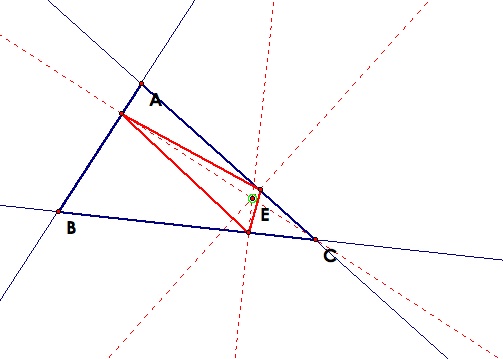
This is where all of the three vertices of the pedal triangle are collinear. From investigation on GSP, I see that as E approaches one of the vertices or becomes one of the vertices of triangle ABC I do indeed get a line. This line can be called the simson line. Click here for GSP.
